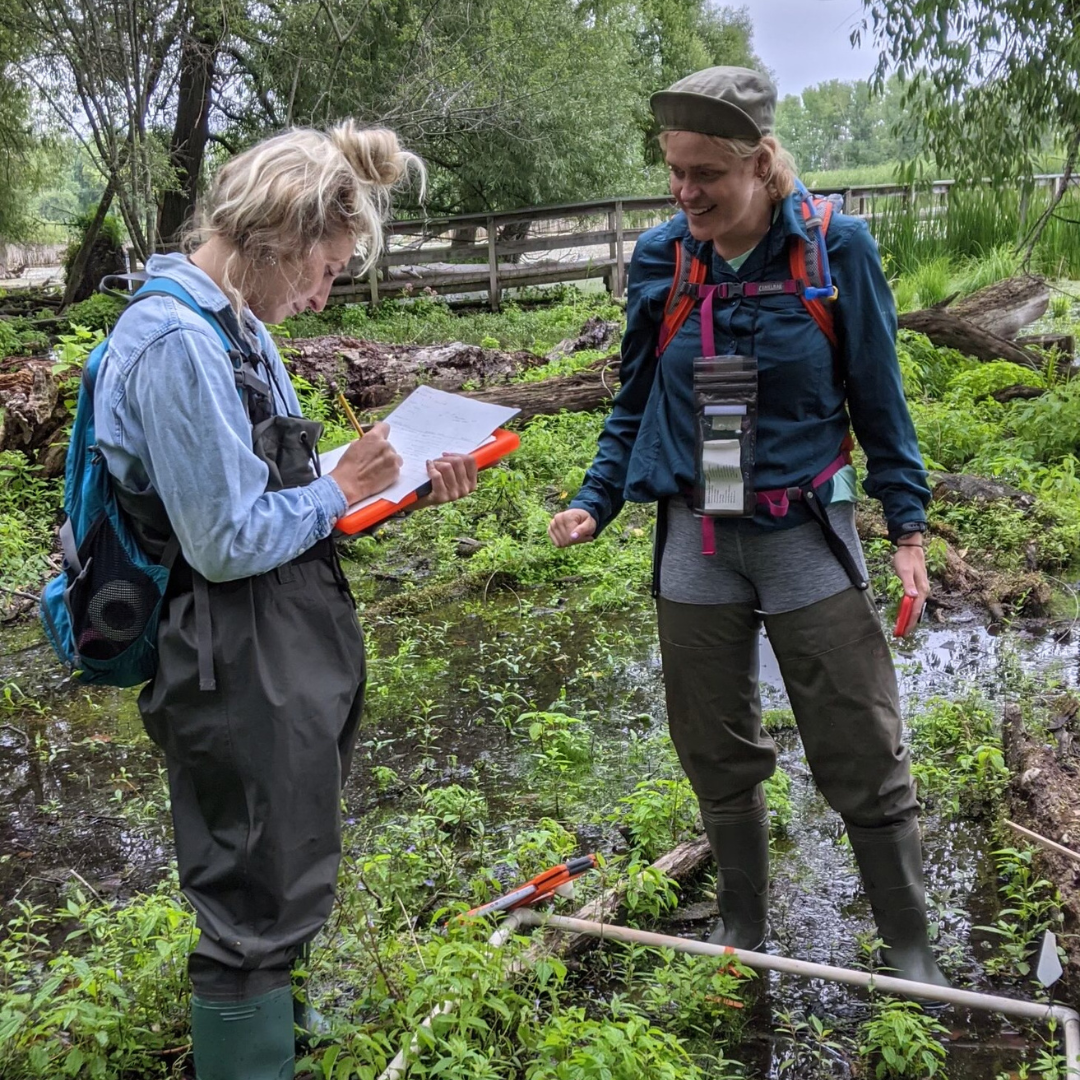EDUCATION CENTER HOURS:
Research at Tifft Nature Preserve
The Buffalo Society of Natural Sciences (BSNS) has a long history, dating back to 1861, of conducting research in the natural sciences. Early work of the BSNS centered on the disciplines of zoology, ornithology, botany, geology, and others, with collections housed at the museum. In 1982, the BSNS took charge of the city-owned property, then known as Tifft Farm Nature Preserve. The Preserve is now viewed as the Society’s “living collection” that includes the site’s vegetation, wildlife, hydrology, soils, natural processes, and history. The Preserve provides an excellent laboratory to conduct research in ecology and environmental science and to continue the BSNS’s tradition as a leading figure in scientific research in Buffalo and western New York. Since 2009, research conducted by students and faculty from local colleges and universities has grown substantially. These institutions include Buffalo State College, Canisius College, SUNY Buffalo, SUNY Fredonia, SUNY Geneseo, Erie County Community College, and others. Partnerships with researchers from these institutions have enriched our understanding of Tifft Nature Preserve, in addition to further cementing Tifft Nature Preserve as a community asset: an excellent and accessible field site for biological research.
The 264 acre site was formerly a transshipment center and dump, but also has the distinction of being one of the largest urban nature preserves in the country. The past land uses and present context of Tifft Nature Preserve provide a unique opportunity for ecological research in areas such as brownfield reclamation, environmental toxicology, and urban wildlife management. This history and isolation from other natural habitats also presents many challenges for current management and preservation of the site’s natural resources. Therefore, research that will assist in addressing these challenges is encouraged. Broad research topics could include invasive species, ecological restoration, wetland habitat management, and nuisance wildlife management. However, this is not intended to be limiting, and a broad array of research proposals will be considered. With the Preserve’s 75 acre cattail marsh, a rich diversity of wildlife (over 260 bird species have been observed), and its prime location on Lake Erie’s waterfront, the opportunities of scientific inquiry are endless.
Interested in conducting research at Tifft? View our research guidelines and proposal requirements here.
Current Research at Tifft Nature Preserve
Dr. Zack Graham, West Liberty University
Surveying the region for the Great Plains Mudbug (Lacunicambarus nebrascensis), which has had little documentation in New York State in recent years.
Dr. Marcella Baiz and Dr. Alix Matthews, University at Buffalo
Exploring the relationship between ectosymbiotic feather mites and host microbiome diversity and composition of five wood warbler species.
Christina Kolbmann, Ph.D. candidate, University of Oklahoma
Advisor: Dr. Jeff Kelly
Examining and documenting how visual and auditory signaling during the courtship performance of the American Woodcock (Scolopax minor) impact mate choice and behavioral variation.
Dr. Karry Kazial; SUNY Fredonia and Rachel Echevarria; SUNY Fredonia student
Conducting bat acoustic surveys to gather information on bat activities, species richness, and to explore whether bats are affected by nocturnal birds of prey.


